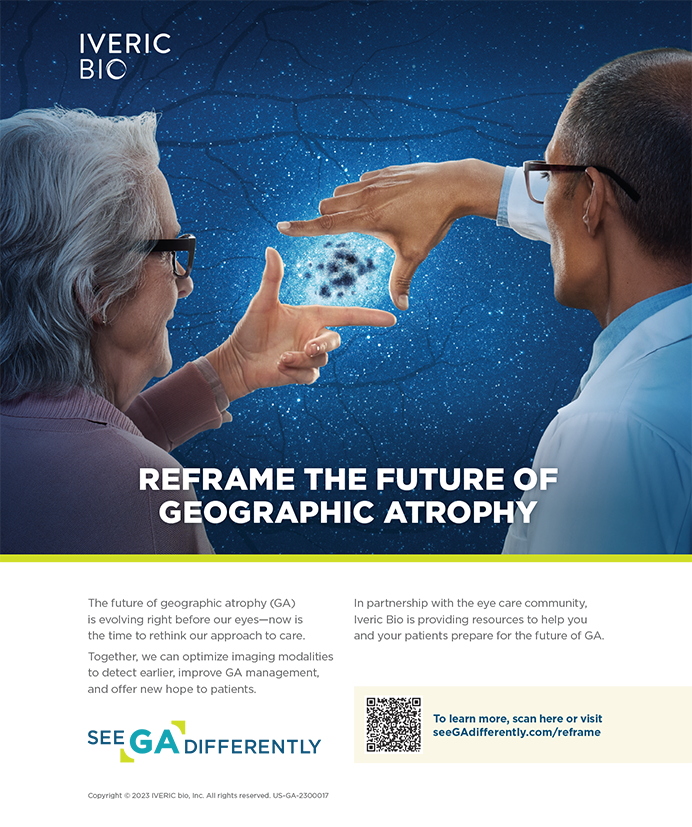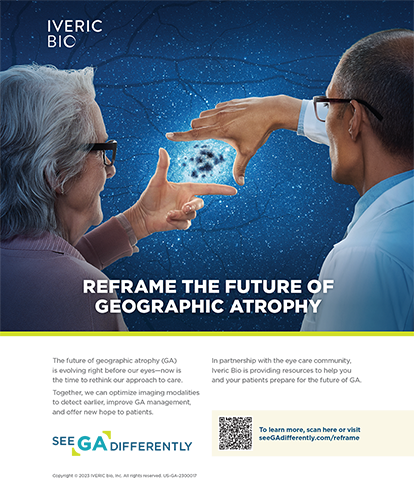Welcome to another installment of “Ophthalmology 360,” a monthly column put together by the members of the Cornea, External Disease, and Refractive Surgery Society (CEDARS), the American Society of Progressive Enterprising Surgeons (ASPENS), and Vanguard Ophthalmology. This month, ASPENS President Sheri Rowen, MD, will discuss how physicians need to modify their approach to managing ocular surface disease. I hope you enjoy the discussion.
—Kenneth A. Beckman, MD, section editor
This month, I am representing ASPENS in “Ophthalmology 360.” ASPENS is a newly formed organization of female key opinion leaders in ophthalmology. We are striving to put more women in leadership roles in our field. Ophthalmologists will hear many new ideas coming from our group in the future.
PARALLELS WITH DENTAL CARE
We ophthalmologists see a plethora of patients daily who have either clinical signs or symptomatic complaints of ocular surface disease (OSD). It is time all clinicians addressed this disease and made a significant change in the practice of ophthalmology.
If it were the 1890s, and someone told us we had to have the base of our teeth uncomfortably scraped with a metallic instrument, move string up and down in every junction between our teeth, and rinse with fluoride to maintain our teeth, would we believe them? Probably not, because we would not have been educated to understand the pathology of dental decay. Somehow, dentists got the word out, made a career for dental hygienists, and created the primary practice that would feed their larger body of work, all the while saving teeth.
In many instances, dental cleanings are covered by insurance, but often, patients pay out of pocket. Moreover, patients begin receiving regular cleanings early in life, and they are conditioned to understand that dental care will help to save their teeth if they follow instructions in terms of hygiene.
An adult tooth cannot be regenerated once lost. Nor can a meibomian gland. We are just learning that, without our proper education and understanding, we may be allowing our patients to lose a body part as they age, because we have not created a model similar to that for dental hygiene. We can visualize the end result of chronic meibomian gland obstruction using new technology (LipiView II; TearScience). With long-term obstruction, the gland dilates, cannot return to its original shape, and eventually atrophies, never to produce oil again. For many patients, our recognition of this cycle is too late.
TREATING OSD IN PRACTICE
After getting into the business of treating dry eye disease (DED) using artificial tears and cyclosporine ophthalmic emulsion 0.05% (Restasis; Allergan), I added omega-3 supplements (Omega Health; Physicians Recommended Nutriceuticals) to my patients’ regimens, and I realized that they were experiencing a significant improvement in the signs and symptoms of DED. The supplements help enhance the composition of the lipids and increase the amount of eicosapentaenoic acid, while providing essential natural anti-inflammatory nutrients to the entire body. Although I was quite pleased, I knew I still had to do more.
More than 3 years ago, Rolando Toyos, MD, introduced me to intense pulsed-light therapy treatments for DED. I was aghast at what I saw inside the glands as I starting expressing them with a cotton swab and my opposing finger after heating them. What was supposed to be a clear substance resembling olive oil was a white, yellow, or brown substance that was more like toothpaste trapped in each gland. How could the ocular surface be properly lubricated when the “oil” had this thick or globular composition? In addition, the gland was so blocked that the material could not escape to the surface.
Even with great technologies, we were still letting an important body part die. Some of us were trying to express glands, but without the proper heat to help liquefy secretions a bit, it was difficult. Douglas Korb, OD, has raised awareness by helping to create the thermal pulsation device known as LipiFlow (TearScience). Now, we are able to evacuate the glands in a comfortable manner for patients, but there was still one more component to the puzzle. Why do some people respond so well, whereas others have a minimal response if any? What came first, meibomian gland dysfunction (MGD) or inflammation? MGD is present in 86% of DED patients,1 but the concomitant inflammation that coexists once these glands are dysfunctional should not be discounted.
The reason that some patients did not get a significant positive result is that their glands had already either dilated too much or had atrophied. This process begins in early youth, and unless patients need glasses or contact lenses, they usually do not see an eye care specialist. In addition, we rarely look at the contents of glands unless someone has chronic chalazia, so abnormal contents build up in the glands with nowhere to go. The lid margin’s surface then keratinizes and externally plugs up the meibomian gland orifice, compounding the problem.
FAILURE TO RECOGNIZE CHRONICITY: PARADIGM SHIFT
We have failed to think about DED as a chronic, progressive disorder of the lids that can be prevented at an early age. Now, we face many patients who have chronic irritation and pain and possibly loss of vision.
The new paradigm should be to educate patients that they need a routine eye “physical” even if they have to pay for it. Many services coming into our new insurance environment are self-pay, and this should be one of them, like dental hygiene was in the past. Pediatricians and internists should be educated—which is one of ASPENS’ missions—so that they can encourage young people to be examined. When of age, patients should have their lids tested by expression to look for the early dysfunction that we now recognize in 40- and 50-year-olds. Perhaps a simple periodic treatment of lid expression every few years will be enough to stop the blockage of the meibomian duct.
I have seen many LASIK patients who thought their DED was a consequence of their surgery only to find that, after MGD treatment, they became functional and asymptomatic again. We can now perform a multitude of diagnostic tests in the office. These include the TearLab Osmolarity System, InflammaDry (Rapid Pathogen Screening), LipiView, Keratograph (Oculus), fluorescein and lissamine stains, and the Sjö test (Nicox), just to name a few. Stay tuned for an ASPENS supplement in Cataract & Refractive Surgery Today in which we hope to develop turnkey methods for the recognition, diagnosis, treatment, and long-term management of the many cases of basic dysfunctional tear syndrome stemming from MGD and inflammation.
CONCLUSION
We may have missed our turn but not our chance to change this chronic disorder for the next generations. It will take a shift in our own philosophies and a willingness to take on prophylactic methods such as early gland evacuation when needed, omega-3 supplements to counteract our American diet now rich in proinflammatory omega-6, and control of concomitant inflammation with pharmaceutical agents like Restasis. We will need to debride lid margins to release the external keratinized plugs and control the development of Staphylococcus on the margins (as with something like the newly branded Avenova [NovaBay]). With awareness of the contributing pathology, we can change the DED paradigm and bring forward a generation who will enjoy ocular comfort and good vision for a lifetime. Then, we can focus on the surgeries and new technologies that we really enjoy! n
1. Lemp MA, Crews LA, Bron AJ, et al. Distribution of aqueous-deficient and evaporative dry eye in a clinic-based patient cohort: a retrospective study. Cornea. 2012;31(5):472-478.
Section Editor Kenneth A. Beckman, MD
- director of corneal services at Comprehensive EyeCare of Central Ohio in Westerville, Ohio
- clinical assistant professor of ophthalmology at The Ohio State University in Columbus and a member of CEDARS
- (614) 890-5692; kenbeckman22@aol.com; Twitter @KenBeckmanMD
Sheri Rowen, MD
• assistant clinical professor of ophthalmology at the University of Maryland
• founder and medical director of the Eye & Cosmetic Surgery Center at Mercy Medical Center and the Rowen Laser Vision & Cosmetic Center in Baltimore
• (410) 332-9500 or (410) 821-5333; srowen10@gmail.com; Twitter @SheriRowen
• consultant to ACE Vision, Alcon, Allergan, Alphaeon, and Bausch + Lomb


